To South Central
A love letter: Lauren Halsey between community activism and a new way of living
With her solo show emajendat, hosted at the Serpentine South Gallery in London until February 23, 2025, Lauren Halsey (b. 1987, Los Angeles) celebrates the vitality of her community, inviting us to reflect on the importance of building an authentic and vibrant relationship with the space around us. Through this perspective, the artist proposes an alternative to the concept of standardized and gentrified contemporary living, advocating for new forms of expression, participation, and reclamation.
The idea that the concept of “living” in the Western world has lost its spatial, ecological, and, above all, social awareness is not a new issue. Over time, the understanding of living as something beyond merely occupying a physical space has been gradually lost. Housing and urban spaces are now standardized, alienating, and disconnected from people’s needs and identities. The modern home often symbolizes consumerism and an industrial approach that disregards long-term sustainability, and well-being. This trend has been perpetuated by the emergence of an era in which urban planning has entered the realm of unbridled marketing. Consequently, cities have become museified, transformed into treasure chests aimed at maximizing profits through residential destinations. Architectural production shapes the spectacle of this total design as an alliance of consumerism, and new neighborhoods—or those fully experiencing gentrification—become the temples of this coalition.
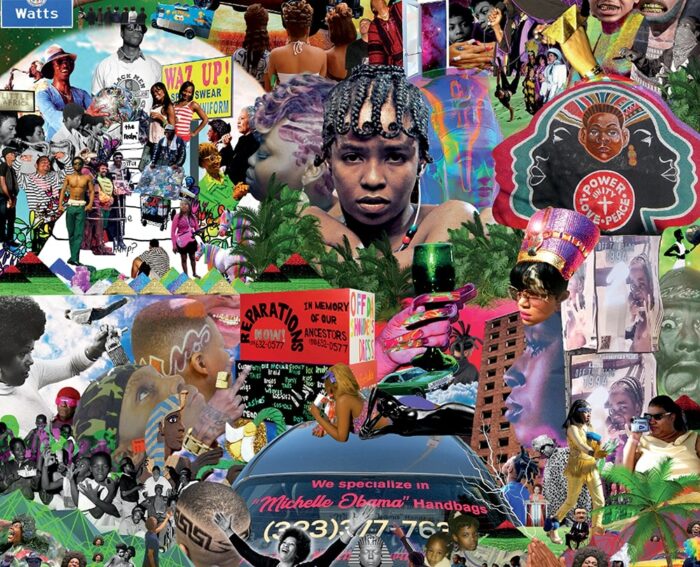
Gallery, Los Angeles.
In response to recent developments, an ambivalent and, in some respects, awkward condition is emerging: contemporary, standardized living corresponds to a society that is increasingly closed off, privatized, and incapable of extending itself toward its surroundings, thereby becoming conservative in its political, ideological, moral, and cultural values. Clearly, these conclusions highlight the need for a radical rethinking, oriented toward slowing down and deprogramming current processes.
This would allow for a clearer understanding of how the true concept of contemporary living involves a careful consideration of the dynamics of daily life and the ongoing interaction between spatial arrangements and human actions. The way and the place in which we live are not mere backdrops but essential contexts for the construction of identity and culture. In this sense, living is not a passive act but implies a form of resistance against the automatism of existence; it means reflecting, choosing, and emphasizing the need to recover sustainable practices and authentic relationships with both internal and external spaces. From this perspective, the term takes on a value of responsibility and care, both for oneself and for others.
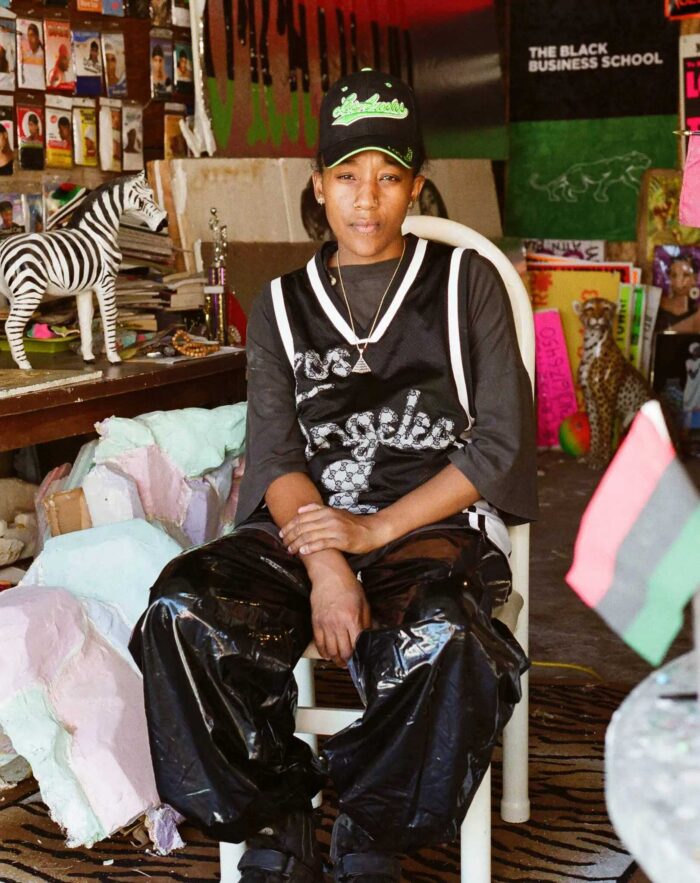
Gagosian.
Lauren Halsey has made this last principle the ultimate goal of her creative practice, which consists of rethinking and implementing the existing possibilities between art, architecture, and community engagement. The South Central neighborhood of Los Angeles, where she grew up and where her family has lived for generations, serves as the starting point for everything. Through monumental installations, murals, and immersive environments, the artist combines collective memory and imagination, transforming the signs and symbols of the urban landscape into a celebration of community vitality and an act of creative resistance against gentrification and the risk of cultural erasure.
Halsey’s architectural works have received significant international attention in recent years, earning exceptional fame and recognition for an artist at the early stages of her career. In 2019, she received the Frieze Artist Award in New York and later created large-scale monuments, including those displayed at the Metropolitan Museum of Art’s Roof Garden in 2023 and the 60th Venice Biennale in 2024.
Now included in important collections such as those of the Museum of Contemporary Art, the Guggenheim Museum, and the Whitney Museum, her work is rooted in the desire to authentically represent her community, recontextualizing vernacular images and motifs tied to pride, resilience, and autonomy, while weaving in references to pop culture, funk, hip-hop, Afrofuturism, and even the utopian architecture of the 1960s. Additionally, inspired by the iconography of ancient Egypt, the artist reclaims forgotten legacies and transforms exhibition spaces into laboratories for imagining a possible future, grounded in respect for the local community and the preservation of its identities. Her approach, which reflects a tension between acting locally and thinking globally, makes her works a tribute not only to the history of her neighborhood but also to its capacity to reinvent itself and resist the forces threatening to dismantle it.
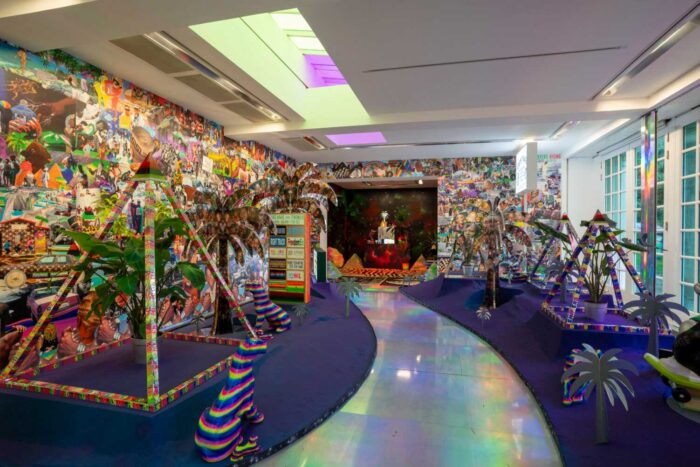
Glendinning. Courtesy the artist and Serpentine, London.
For Halsey, South Central is an active, participatory place, a living entity that enables us to rethink the concept of ‘living’ as an act of reclamation, expression, and participation, where everyone is called to build a lively and authentic relationship with their space.
A deep empathy for her community’s history is present in the Serpentine show as well: emajendat, the artist’s first solo exhibition in the United Kingdom. This intervention draws on recent significant projects mentioned before, including the eastside of south central los angeles hieroglyph prototype architecture (l), commissioned for the Roof Garden at the Metropolitan Museum of Art in New York (2023), and keepers of the krown, presented at the 60th Venice Biennale (2024). Both initiatives propose increasingly ambitious architectural solutions, in dialogue with their surroundings, while serving as experimental grounds for one of Halsey’s ultimate goals: to create a public sculpture garden in South Central. For this reason, at the Serpentine South, the artist has transformed the space into a site-specific immersive “Funk garden”, conceptually extending the Kensington Gardens into the exhibition halls. This choice stems from the awareness that large gardens and green spaces are extremely rare in South Central, and when they do exist, they are often turned into shelters for the homeless due to crises related to poverty, the lack of affordable housing, and precarious living conditions.
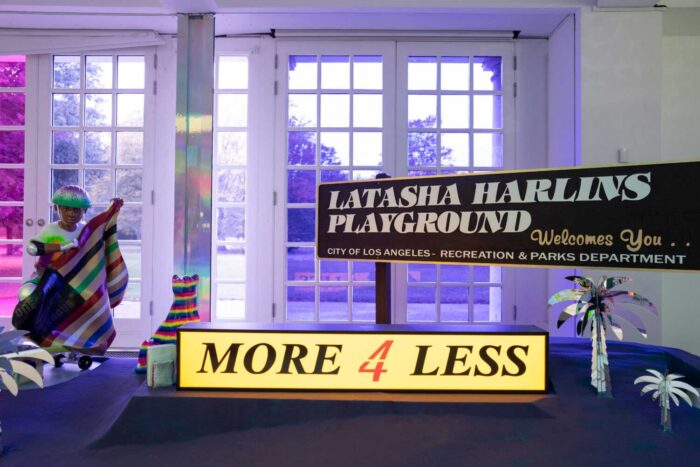
Glendinning. Courtesy the artist and Serpentine, London.
From the outset, the exhibition is a tribute to Halsey’s maximalist style: spanning eras, cultures, and references, the installation draws from a wide range of sources and iconographies (the African diaspora, ancient Egypt, Black and queer icons, visionary architecture) to celebrate the rich visual culture of South Central and its inhabitants. A visual and sonic maximalism inspired by funk serves as the backdrop to psychedelic sand dunes, life-size dioramas, walls and floors covered in recycled CDs, photographs, signs, sculptures, and fountains. The artist constructs a kind of spatial choreography, a theatrical scenography that mirrors the mood of the scene, elevating the psychological component as an essential element in the perception of space. Halsey dismantles the traditional methods of exhibition design, developing an interaction with the audience and pursuing the concept of a total artwork, where there is no distinction between what is to be viewed and what is to be experienced.
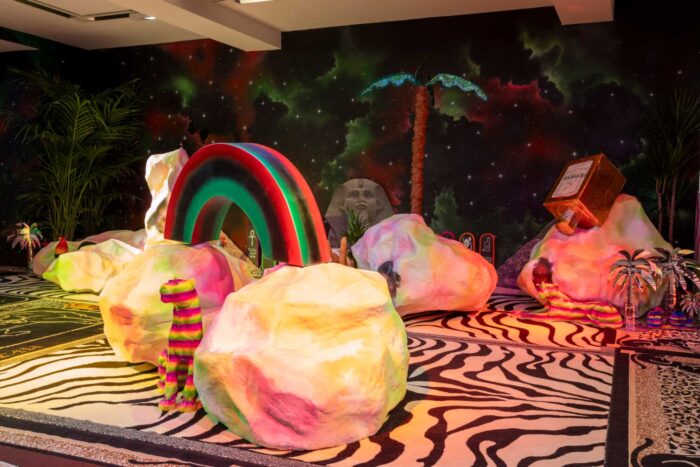
Glendinning. Courtesy the artist and Serpentine, London.
emajendat thus becomes a manifesto of a holistic approach, embracing the idea that the artwork is not separate from its surrounding context but fully occupies the entire space. Everything is interconnected and relational: the space becomes a living entity, a place of metamorphosis and interpenetration of planes and perspectives that transcends the static nature of traditional vision. What emerges is a conceptual, heterotopic environment designed not to offer the visitor a more or less orderly succession of works but a truly synesthetic and sensory experience, reflecting a particular conception of life, culture, and education. The experience of the everyday life enters the exhibition, outlining a non-hierarchical and democratic narrative that fully decolonizes the display. The exhibition space is reconfigured to liberate itself from traditional canons and transform into an architecture of practices and discourses.
Lauren Halsey’s art thus becomes a space of subtraction capable of producing new contaminations and connections, closely tied to themes of solidarity, sharing, and identity. It is no coincidence that her practice has extended to the establishment of the Summaeverythang community center in 2019, dedicated to the empowerment of Black and Brown people socio-politically, economically, intellectually, and artistically.
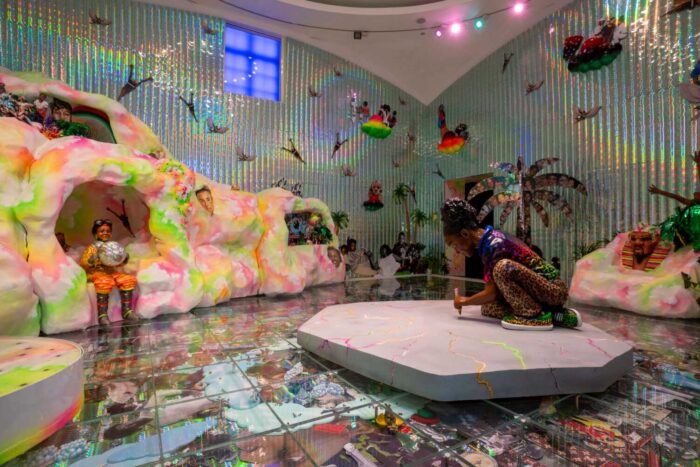
Glendinning. Courtesy the artist and Serpentine, London.
In an era marked by gentrification and corporate interests, creating a community land trust (a model for community-based land management) should not be utopian, yet it often is. As a counter-manifesto to oppressive structures, the organization thrives and remains committed to serving its community, upholding the grassroots spirit of service that has always characterized the artist’s upbringing. It also provides free local and organic produce to the residents of South Central, following an ethos of empowerment through models of autonomy and self-sufficiency.
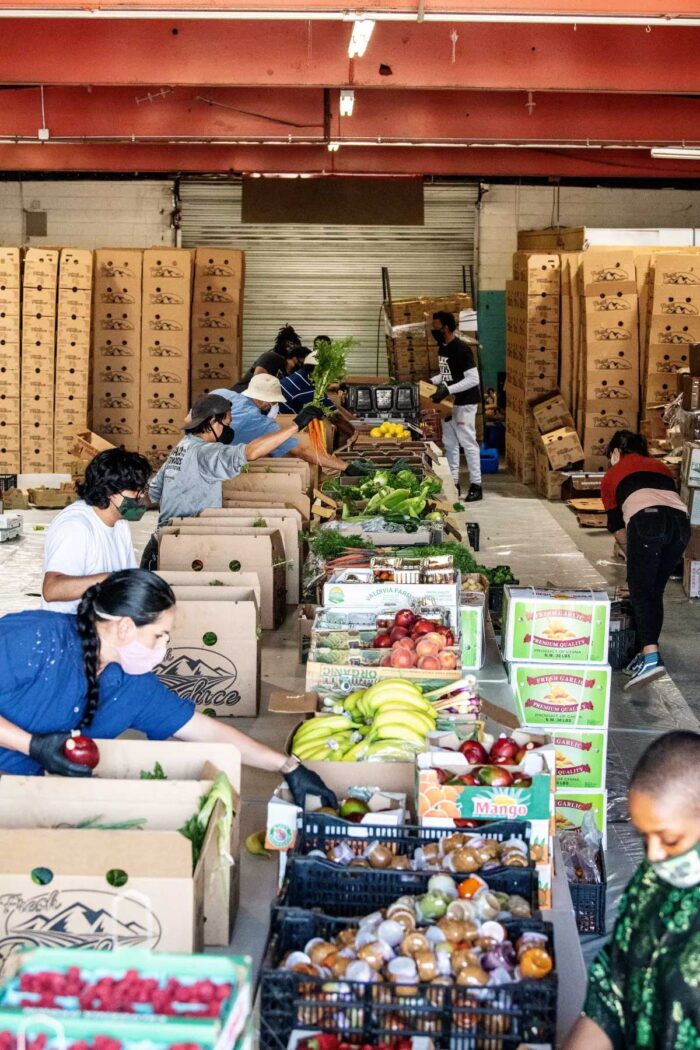
South L.A. Photo Mariah Tauger/Los Angeles Times.
Living in a space, therefore, in the anthropological sense, means being able to invest desires, dreams, or memories into it, turning it into an identifiable place in which one can recognize themselves. With deep roots in South Central, Halsey dedicates her work—both inside and outside the studio—preserving the cultural heritage of this community and supporting those who inhabit it. At this point, the neighborhood becomes an extension of her being, a web of actions and meanings woven daily to combat speculation and market forces, and resist the passive occupation of space. The artist leaves us with an invitation and, above all, a proof that it is still possible to rethink the concept of living in the Western world as a critical act and a commitment to a better future.



